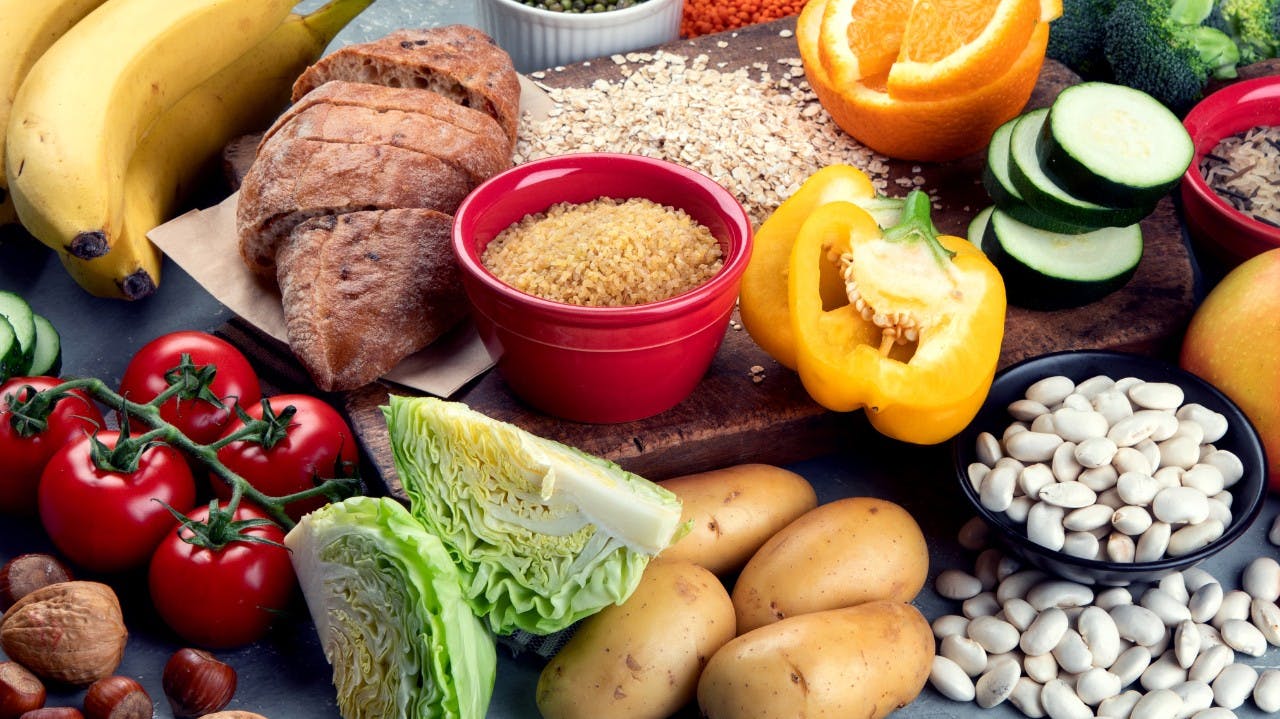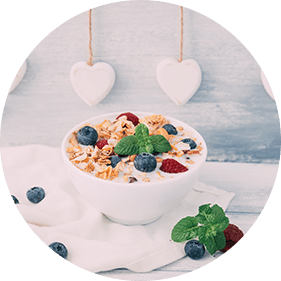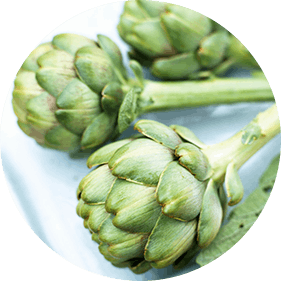Common Sources of Fiber: Where to Look for Fiber in Your Food


If you're trying to add more dietary fiber into your everyday diet, it's fairly easy to do and it can benefit your digestive health as well. Getting enough fiber (and water) in your diet helps food move quickly and more easily through your digestive tract and keeps it running smoothly.1
Most Americans do not eat the recommended fiber amounts of fiber for their age and gender. For example, the Institute of Medicine (IOM) recommends that men between the ages of 19-50 consume 38 grams of fiber per day, whereas older men, 51+, should consume 30 grams of fiber per day. The IOM also recommends that women between the ages of 19-50 years old should consume 25 grams per day of fiber, whereas woman 51+ years old should consume 21 grams per day of fiber.2A One way to incorporate more fiber in your diet is to add more high fiber foods into your everyday routine. While that sounds like an easy fix, it can be difficult to know which foods are good sources of fiber and of what kinds.
What are the most common sources of fiber?
Dietary fiber comes from various food sources including wheat, beans, fruits and vegetables.2 Among these different sources of fiber, there are actually two types of dietary fiber: soluble and insoluble. Soluble fiber absorbs water in the digestive system, slows digestion and helps manage cholesterol levels.5 Insoluble fiber, on the other hand, doesn't absorb water.2 Most plants contain some of both, but you'll want to make sure to eat both insoluble and soluble forms to get the full benefits behind fiber.
What are some sources of insoluble fiber?
There are multiple foods that are a source of insoluble fiber. Foods like whole grains, wheat bran, and the peels and seeds of vegetables and fruits are good sources of insoluble fiber.3
Sources of insoluble fiber include:1,4
1. Whole Wheat Pasta
Whole wheat pasta is a good source of fiber you can make as spaghetti, cold pasta salads, and more. Whole wheat spaghetti contains 6 grams of fiber per cup.4
2. Chia Seeds
Chia seeds have become more popular over the last few years and contain a lot of fiber, 2 grams per teaspoon.4 You can soak chia seeds in milk to make chia pudding, and add them to smoothies or salads.
3. Raspberries
Raspberries are delicious on their own and a good source of fiber. You can eat them on their own, with yogurt, in salads, or perhaps in your next dessert. In each cup of raspberries, there is 8 grams of fiber 4
4. Whole Wheat Bread
If you love your morning slice of toasted whole wheat bread, good news! Each slice has about 2 grams of fiber.4 Remember, it needs to be whole wheat for that fiber content.
5. Quinoa
Quinoa has also gained popularity recently and it's no wonder. It's tasty on its own as a side but also in cold salads. Plus, each cup of cooked quinoa contains 5 grams of fiber.4
What are some sources of soluble fiber?
While the foods above contain mostly insoluble fiber, you also need soluble fiber in your diet. Food like oat bran, barley, nuts, seeds, peas, lentils, and some fruits and vegetables are all good sources of soluble fiber.3
Some sources of soluble fiber include:1,4
1. Barley
Think of barley as rice's less popular cousin. It has a lot of the same qualities and can be used in many of the same ways. Try it in soup and in cold salads. Each cup of barley has a heaping 6 grams of dietary fiber.4
2. Green Peas
Green peas are another fiber super-star. Add them in casseroles, soups, and side dishes for 9 grams of fiber per cup.4
3. Pear
If you love fruit, try a pear. For fresh eating or in salads, each medium pear contains about 5.5 grams of fiber.4
4. Instant Oatmeal
Oatmeal is a quick breakfast option and can help you get your required fiber every day. Each cup of instant oatmeal has around 5 grams of fiber.4
5. Lentils
Lentils may have the most fiber per cup of any food on this list, so you know they're a decent source of fiber. You can use lentils in soup, chili, cold salads, and more. Each cup has a whole 15.5 grams of dietary fiber, too.4
As a reminder, these fiber levels are guidelines. Different brands can vary, so check your product levels to find the exact fiber amounts
Tips to Including More Sources of Fiber in Your Diet
If you are trying to add more fiber to your diet, it's important to increase your fiber intake gradually over a few weeks. It can take your body time to acclimate to adding more fiber to your diet, especially if you were a low-fiber consumer to begin with. Remember also to drink more water when increasing fiber intake. Fiber can pull in more water, so you'll likely need more water to avoid possible constipation.2
If you're not quite sure about adding these sources of fiber into your main meals just yet, you can also add them as snacks or treats throughout the day. Make a smoothie with fruits, veggies, and chia seeds as a way to incorporate more dietary fiber. Or air pop some popcorn. The possibilities are endless! As always, if you're not sure exactly how to get more fiber into your diet or have concerns, talk to a doctor or licensed dietitian.
- Chart of high-fiber foods. Mayo Clinic. https://www.mayoclinic.org/healthy-lifestyle/nutrition-and-healthy-eating/in-depth/high-fiber-foods/art-20050948/ Accessed 2/25/2021. Referenced text is highlighted in source PDF.
- 11 Best high-fiber foods. Cleveland Clinic. https://health.clevelandclinic.org/11-best-high-fiber-foods/ Accessed 2/25/2021. Referenced text is highlighted in source PDF.
- 2a. Institute of Medicine. 2005. Dietary Reference Intakes for Energy, Carbohydrate, Fiber, Fat, Fatty Acids, Cholesterol, Protein, and Amino Acids. Washington, DC: The National Academies Press. https://doi.org/10.172226/10490 . Highlighted on Page 7.
- Soluble vs insoluble fiber. Medline Plus. https://medlineplus.gov/ency/article/002136.htm/ Accessed 2/25/2021. Referenced text is highlighted in source PDF.
- U.S. Department of Agriculture, Agricultural Research Service, Food Data Central, 2019. fdc.nal.usda.gov/ Accessed 3/5/2021.
- Soluble fiber and serum lipids: a literature review. 1994. Journal of the Academy of Nutrition and Dietetics. https://jandonline.org/article/0002-8223(94)90099-X/fulltext .
Nourish the Goodness Inside
Benefiber is an easy way to add fiber to your life.
$1.50 OFF BENEFIBER






